
30 minutes exposure. 3M 1000 slide film.
210mm f/4 Canon lens.
| Object Type | Emission Nebula |
| Constellation | Orion |
| Magnitude | 5.0 |
| Size | 65.0' x 65.0' |
Visible to the naked eye as the middle "star" is the sword of Orion (the handle of the saucepan) M42 is a wonderful object for any telescope. Even a good pair of binoculars will reveal its true nature. In the photograph below, the bright star near the top of the image is zeta Orionis (Alnitak). Alongside this star is NGC 2024, also known as the Flame Nebula. Just to the south of Alnitak is the famous object B33, more commonly known as the Horsehead nebula. The bright nebula surrounding the Horsehead is IC 434.
M42 is one of the most famous objects in the sky, and is usually one of the first deep-sky objects attempted by beginners. The reasons for this are simple. It is very easy to locate and it shows wonderful detail even in small telescopes and under moderate light pollution. Certainly not something that can be said for most emission nebulae!



40 minutes exposure. Fuji Super G 400 film.
6" f/3.75 Schmidt-newtonian.
In addition to being one of the first objects for beginning observers, M42 is also usually one of the first deep-sky objects photographed by observers, myself included. The photographs below were taken in the early 1970's and are among the first astrophographs I attempted.


Compared to more recent photographs, those just above seem crude. However throughout most of the 1960's and 1970's, Tri-X was considered the best film for astrophotography, and those images were received with much acclaim from fellow club members. The switch to colour films, modern digital imaging systems, and motorized tracking, has made deep-sky photography much more enjoyable and rewarding, enabling so much more to be recorded with considerably less effort!

One of the problems with using colour films is that of colour response. As can be seen in many of these photographs, different films have very different spectral response. In addition, make films experience a change in colour over time. Fuji Provia is particularly susceptible to this. It has a very poor response to red compared to blue, and over time the colours become more magenta.

40 minutes exposure, Fuji Super HG II 400 film.
5" f/5 refractor at prime focus.
The small, hook-shaped nebula just above M42 is M43. It is actually part of M42. The fainter, blue reflection nebula further to the north (above) is NGC 1973-1975-1977. This is a difficult object for smaller telescopes, but is is visible in a 10" under dark skies.


40 minutes exposure. Fuji Super HG II 400 film.
300mm f/6 newtonian at prime focus.
As can be seen in the above photographs, photographing the nebula is difficult due to the considerable range in brightness between the central core of the nebula and its outer regions. An exposure lone enough to record the outer regions will overexpose the core. The only way around this problem is to make more than one exposure using different exposure times, as in the images below.
Using 2 different exposures, it is possible to combine the images in Photoshop to produce an image that shows both the outer regions and the bright core.

Even more detail can be teased out using unsharpe masking techniques. Jerry Lodriguss has an excellent website discussing the use of Photoshop for image processing, including unsharp masking. Below is the above image processed using the techniques he describes.




Combination of 4, 60 second exposures and 5, 10 second exposures. Modified Canon Digital Rebel DSLR camera.
5" f/5 refractor at prime focus.

Combination of a 120 second exposure and a 60 second exposure. Modified Canon Digital Rebel DSLR camera.
5" f/5 refractor at prime focus.

Combination of 48, 30 second exposures. Modified Canon Digital Rebel DSLR camera.
5" f/5 refractor at prime focus.

Combination of 9, 30 second exposures and 6 10 second exposures. Modified Canon Digital Rebel DSLR camera.
20" f/6.8Dall-Kirkham cassegrain at prime focus.
Near the centre of the nebula is a small group of stars known as the "Trapezium". Four stars are visible in a small telescope, with several more visible in larger telescopes. The stars are labeled A - D in order of right ascension, and E - H in order of discovery. A - D are easily visible in any telescope. E and F are visible in a 4", while G and H require a large telescope.
Stars A and B are both eclipsing variables. A is the most interesting as the eclipses are just under 65.5 days apart. The brightness changes from 6.7 to 7.7 over a 10 hour period, remaining at minimum magnitude for about 2.5 hours.

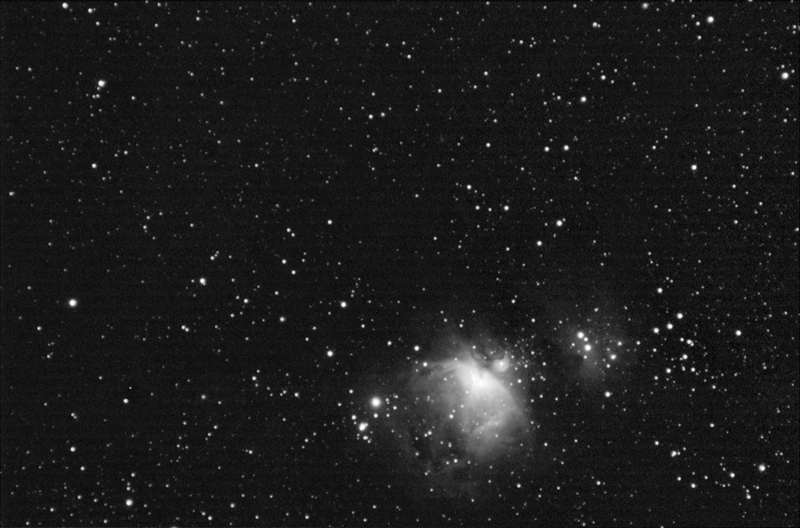
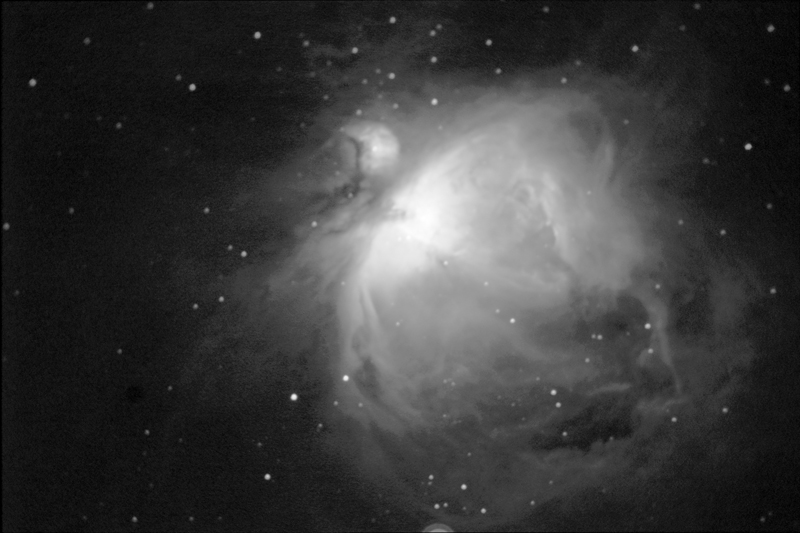
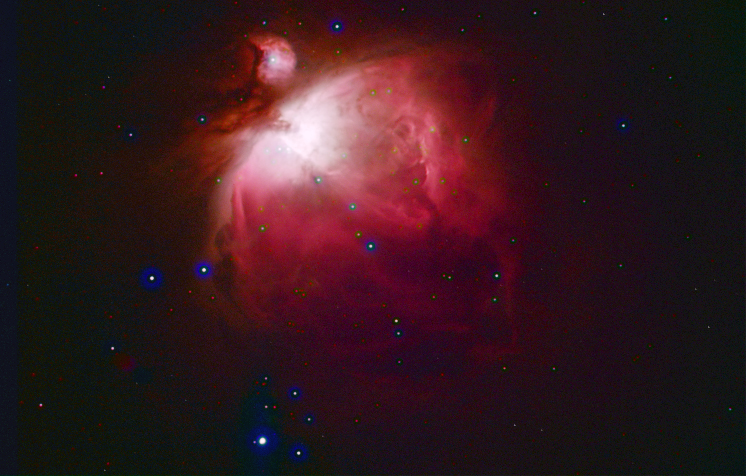

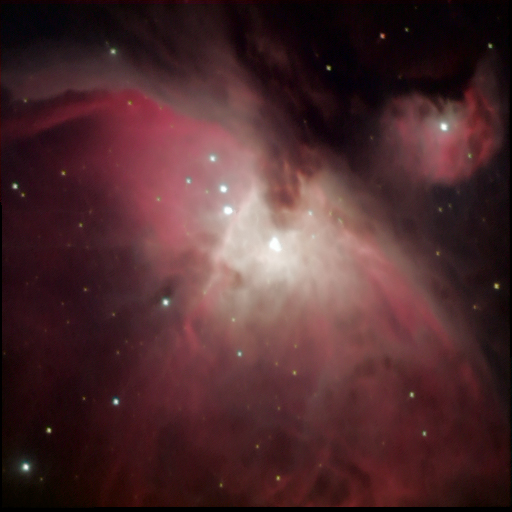
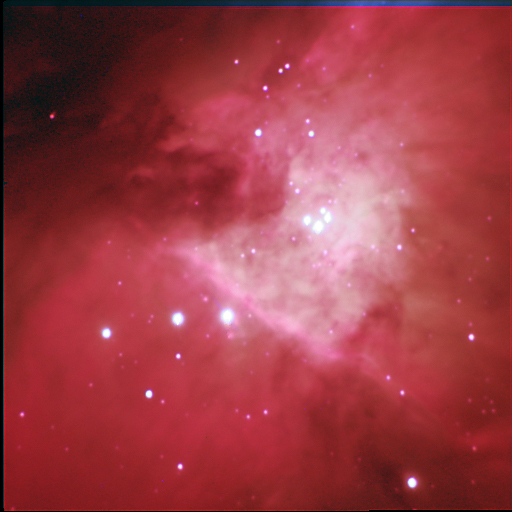
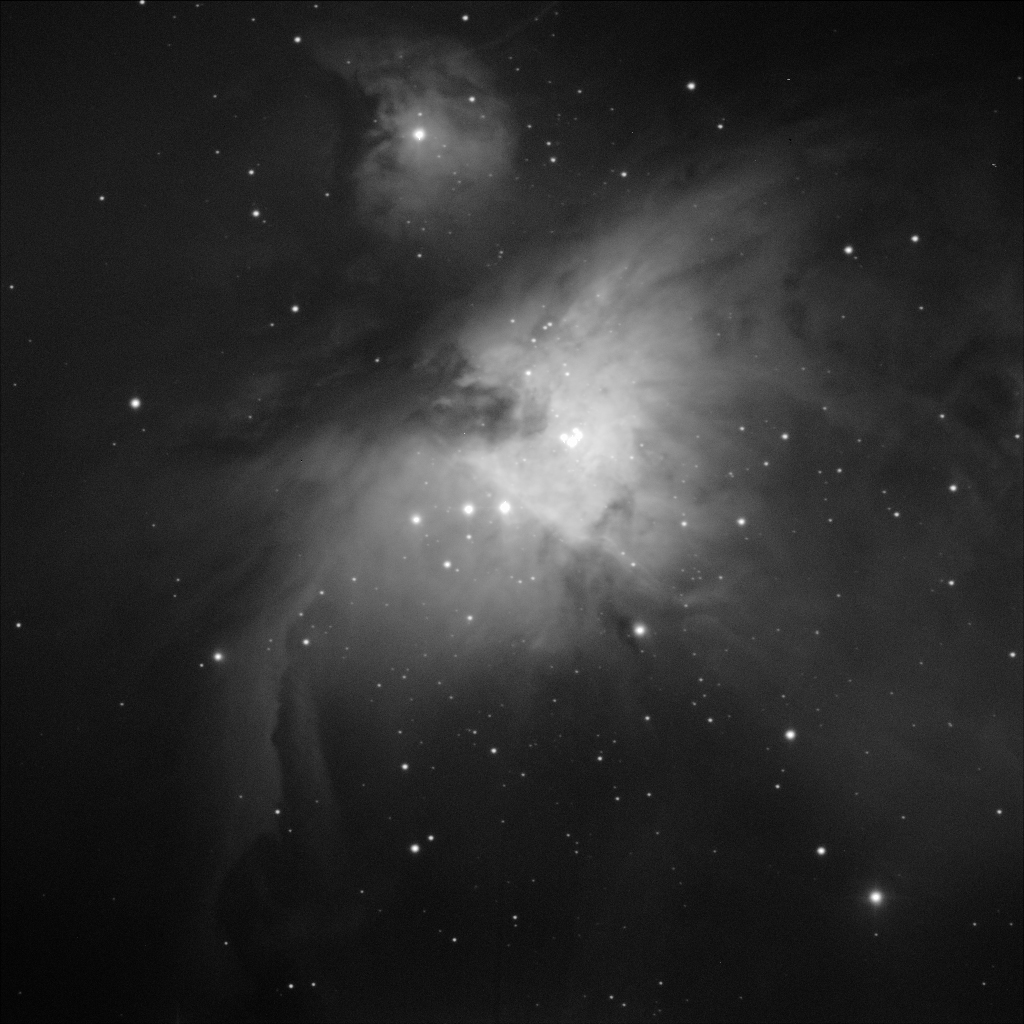

The entire region of Orion is covered with faint nebulosity, with objects such as M42 merely being just the brighter tips, where a hot, bright star has excited the gas into strong florescence. The image below covers most of the constellation and was taken using a wide-band H-alpha filter in strong moonlight. In the image, M42 shines brightly, while above it close to the belt star Alnitak, are the The Horsehead nebula (B33) and NGC 2024 (The Flame nebula). Off to the left is the huge arc of Barnard's Loop, An ancient supernova remnent. It is interesting to compare this image with film images of the same region, such as here.

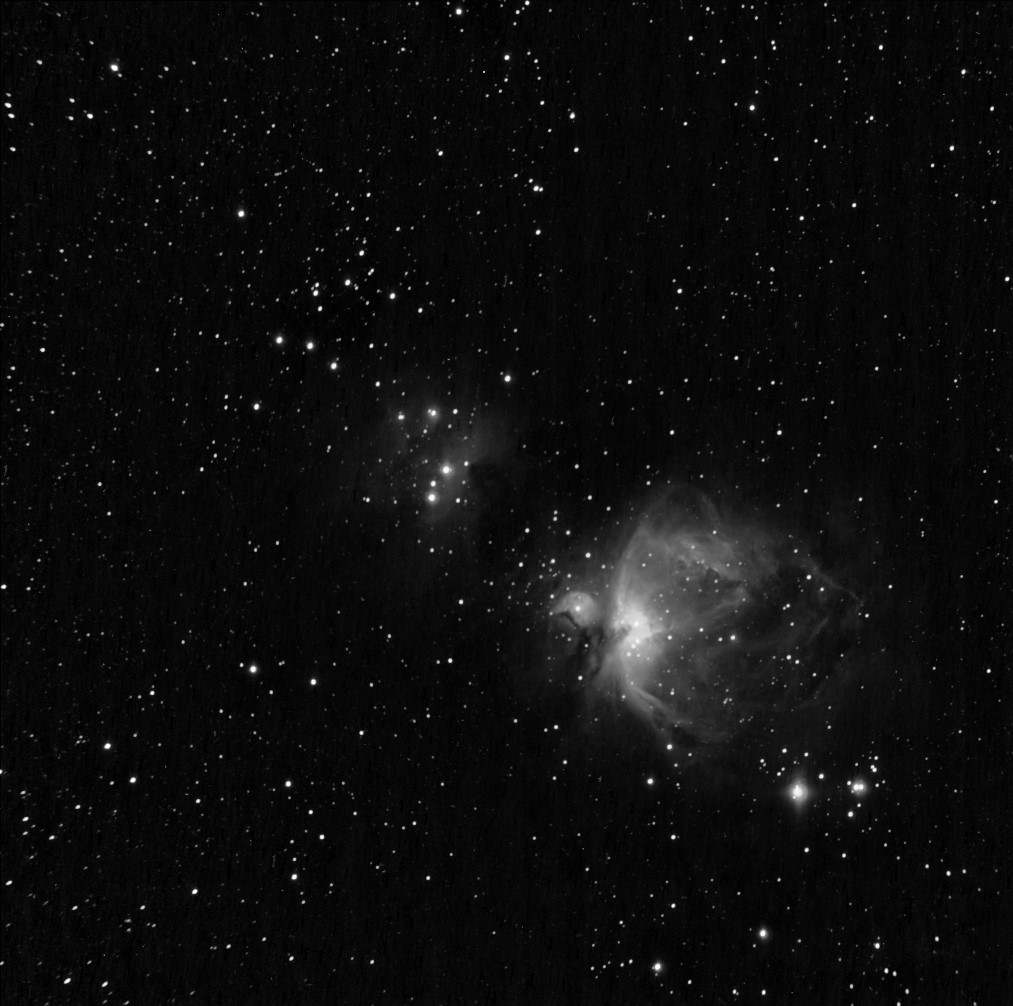

The above image was processed using the H-alpha images as the red channel. This is the preferred palette of the European Southern Observatory. The HST observers prefer to use the SII images as the red channel since the SII line is at a slightly longer wavelength than the H-alpha line. This results in a more green-dominated image as shown below.


The above image was processed using the H-alpha images as the red channel. This is the preferred palette of the European Southern Observatory. The HST observers prefer to use the SII images as the red channel since the SII line is at a slightly longer wavelength than the H-alpha line. This results in a more green-dominated image as shown below.

Two of the stars in the Trapezium are long period eclipsing binaries. One of these (star A) has a period of about 65 days and underwent an eclipse while I was imaging one night so I made several images to try and show the dimming of the star. Some of these are shown below. During the interval between the images the star should have dimmed by around 0.5 magnitude.



Although precise photometry is not possible with these images, there is a change in relative brightness between the 2 top stars in the trapezium (the one on the right is the variable) between the first image and the other two.